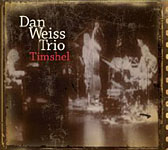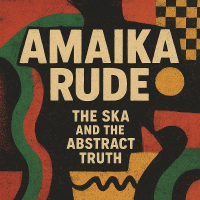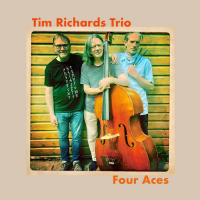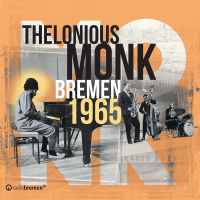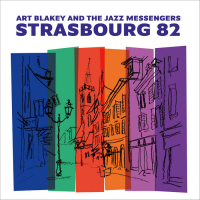Home » Jazz Articles » Album Review » Dan Weiss Trio: Timshel
Dan Weiss Trio: Timshel
With few, if any, breaks between Weiss' 12 original compositions, Timshel bucks the "iPod and shuffle" generation by being best absorbed as a single, hour-long suite. Its greatest strength is the overarching narrative that pulls together Weiss' expansive musical interests, including Indian studies both spiritual and musical.
All three of this trio's players are worthy of greater recognition, and they're beginning to get it. In addition to the increasingly ubiquitous Weiss, Thomas Morgan has replaced veteran bassist Marc Johnson in guitarist John Abercrombie's quartet, bringing sparer muscularity to Wait Till You See Her (ECM, 2009). Alongside work with Chris Jentsch, bassist Eivind Opsvik, and David Binney (with whom Morgan also plays), pianist Jacob Sacks has been steadily evolving as a leader on albums like Two Miles A Day (Loyal Label, 2007). Young they all may be, but this trio avoids all youthful trappings of excess and ego—focusing, instead, on bringing Weiss' complex compositions to life while rarely approaching a simmer, let alone a boil.
That there's a pulse to be found in everything can be heard on "Always Be Closing," where Al Pacino and Jack Lemmon's cadential dialog from the 1992 film Glengarry Glen Ross is scripted into an oblique harmonic treatment, Weiss' kit following the script with unfailing accuracy. Weiss continues the "Chakradar" series begun on No Yes When with pitches based loosely on tabla strokes, though Morgan's elliptical bass line and Sacks' repetitive piano figures expand the perspective considerably, as Weiss' Konnakol (Indian vocal rhythm) provides the forward motion. "Frederic" is, indeed, Chopin, but Sacks' lyrical arpeggios are juxtaposed with Weiss' delicate but insistent drumming and Morgan's fluid but strangely contradictory lines.
Weiss presents plenty of skewed form and abstruse melodism throughout, but even on "Stephanie"—where melody is more easily discernable and Sacks' debt to Brad Mehldau is clear, even as he avoids the overt virtuosity that can be both advantage and liability—the focus is on harmonic depth and sophistication. Chops, in fact, play little role on Timshel, despite it being prerequisite to this music's credibility and verisimilitude.
Like its predecessor, Timshel is fraught with challenge, but repeated listens to reveal layer after layer of ideas, interaction, and profundity. Quietly redefining the piano trio tradition with a blend of abstraction, cross-cultural touchstones, embedded classicism, and empathic improvisation, Timshel's greatest success is the nuanced subtlety of this compelling trio's collective interpretive talent.
Track Listing
Prelude; Stephanie; Always Be Closing; Frederic; Teental Song; Chakradar # 4; Interlude; Florentino and Fermina; What Do You Want To Be When You Grow Up?; Timshel; Dream; Postlude.
Personnel
Dan Weiss
drumsDan Weiss: percussion; Jacob Sacks: piano; Thomas Morgan: bass.
Album information
Title: Timshel | Year Released: 2010 | Record Label: Sunnyside Records
Tags
PREVIOUS / NEXT
Support All About Jazz
 All About Jazz has been a pillar of jazz since 1995, championing it as an art form and, more importantly, supporting the musicians who make it. Our enduring commitment has made "AAJ" one of the most culturally important websites of its kind, read by hundreds of thousands of fans, musicians and industry figures every month.
All About Jazz has been a pillar of jazz since 1995, championing it as an art form and, more importantly, supporting the musicians who make it. Our enduring commitment has made "AAJ" one of the most culturally important websites of its kind, read by hundreds of thousands of fans, musicians and industry figures every month.


